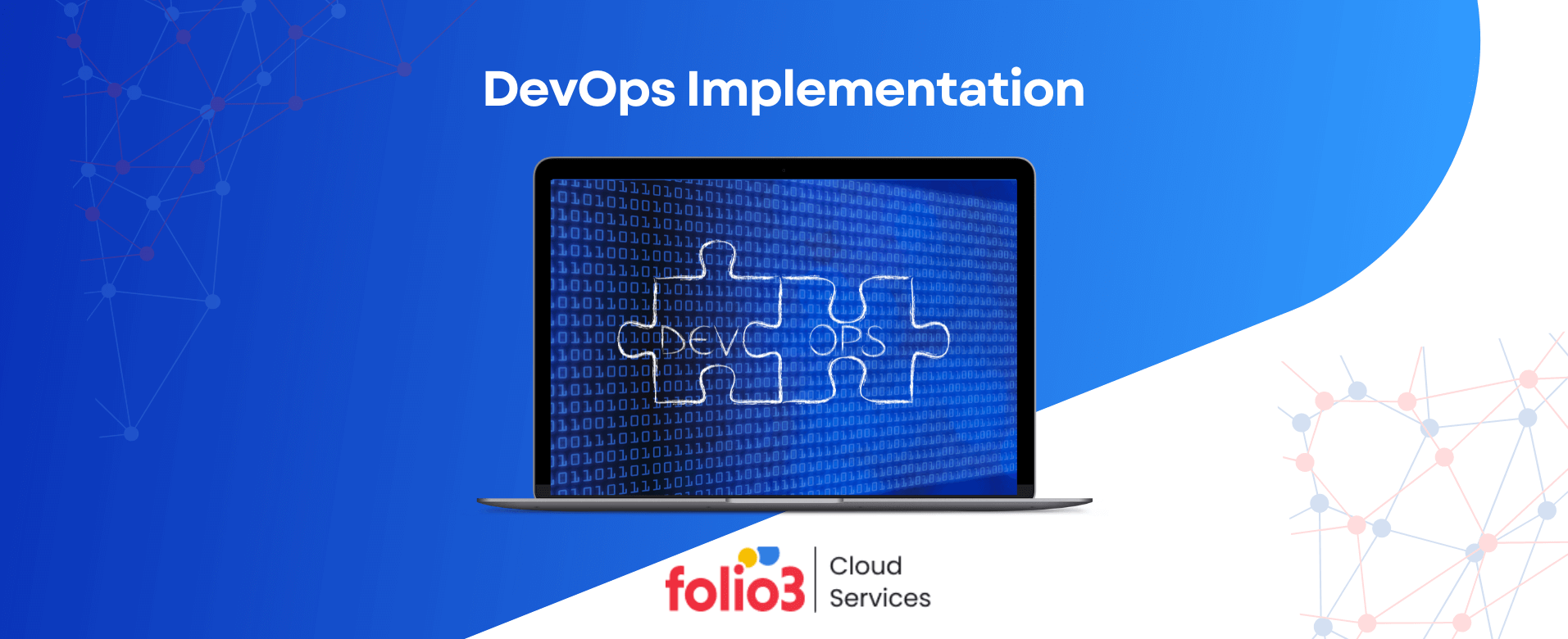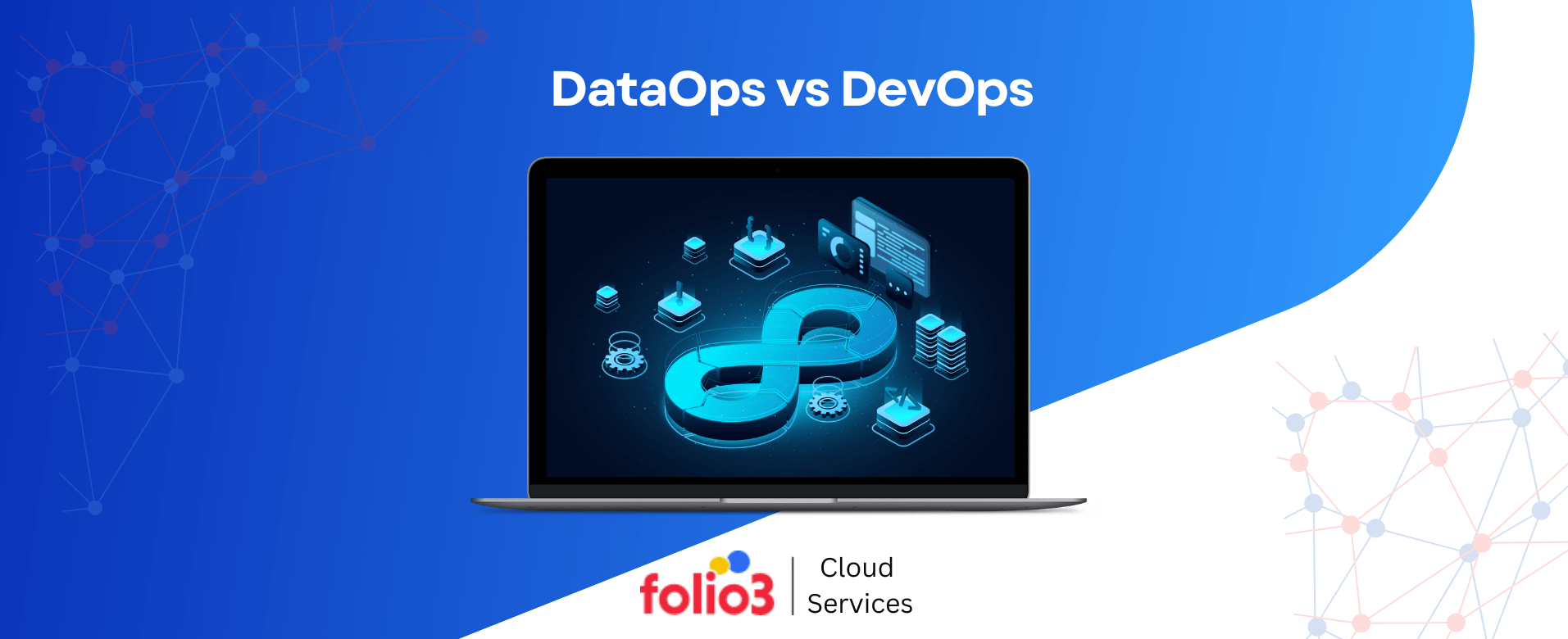Organizations increasingly turn to DevOps to enhance their development processes and improve team collaboration. This combination of development and operations is designed to streamline workflows, accelerate delivery times, and ensure seamless software integration and deployment.
According to a 2023 report by Forrester, companies with a strong DevOps culture experience 60% faster deployment times and 40% fewer failures in production. However, a well-crafted DevOps implementation plan is the key to realizing these benefits.
A clear roadmap is essential for guiding teams through the DevOps implementation process, ensuring alignment between development and operations, and helping overcome challenges like miscommunication or inefficiencies. Without a well-defined DevOps strategy, companies may struggle with inconsistent workflows, slow releases, or even resistance from stakeholders.
So, how do you successfully implement DevOps? In this guide, we’ll walk you through the essential steps, offering a step-by-step approach to help you understand how to implement DevOps from scratch and the critical strategies and best practices that drive success.
7 DevOps Implementation Steps
Implementing DevOps requires a well-thought-out strategy and approach involving various stages of planning, collaboration, and automation. Below are seven crucial steps to help ensure a successful transition to a more efficient, agile, and scalable software development process.
Step 1 – Create a Cross-Functional Team
A cross-functional team, which can work together toward common goals, is the foundation of any successful DevOps implementation. This team should include developers, operations professionals, quality assurance engineers, and security specialists. Effective DevOps services rely on seamless collaboration between these roles to streamline workflows, enhance automation, and drive continuous delivery.
Having a unified team ensures that everyone is aligned with the DevOps strategy and understands their role in the DevOps implementation process. This helps eliminate silos, encourages transparent communication, and fosters a sense of shared responsibility for software quality and delivery. This DevOps implementation approach accelerates decision-making, as teams are empowered to solve issues without waiting for approval from different departments.
Step 2 – Implement Agile Practices
Agile practices are integral to DevOps. They focus on iterative development, rapid feedback, and collaboration across all software lifecycle stages. By implementing Agile, teams can deliver high-quality software in smaller, more manageable increments, reducing the risk of large-scale failures.
Incorporating Agile methodologies, such as Scrum or Kanban, into the DevOps implementation strategy allows for faster delivery cycles, continuous improvement, and enhanced adaptability to change.
Step 3 – Build a CI/CD Pipeline
A Continuous Integration/Continuous Deployment (CI/CD) pipeline is critical to the DevOps implementation plan. It automates the processes of testing, building, and deploying code, making it easier and faster to deliver software updates.
This automation accelerates deployment and reduces human error, ensuring that only high-quality code is released to production. Integrating CI/CD pipelines into your DevOps implementation process can improve code quality and make your software delivery more reliable and efficient.
Step 4 – Automate Infrastructure with IaC (Infrastructure as Code)
Infrastructure as Code (IaC) is a game-changer for DevOps teams looking to automate infrastructure provisioning, configuration, and management. IaC enables teams to define and manage infrastructure using code that can be version-controlled, reviewed, and tested like software code.
Implementing IaC allows for rapid, repeatable deployments and improved scalability and consistency across environments. Puppet’s 2023 State of DevOps report reveals that teams implementing IaC see a 40% improvement in deployment frequency and a 35% reduction in production failures. By automating infrastructure with IaC, you’re taking a big step toward simplifying and speeding up the DevOps implementation approach.
Step 5 – Integrate DevSecOps
Security is crucial to the DevOps implementation process and should not be an afterthought. DevSecOps integrates security practices into the DevOps pipeline from the very beginning, ensuring that security is continuously integrated throughout the development, testing, and deployment stages.
With data breaches becoming more frequent, integrating DevSecOps is essential for maintaining secure software development practices. By adding automated security checks and vulnerability scanning to your CI/CD pipeline, you can ensure that security is prioritized without slowing down development.
Step 6 – Enable Continuous Monitoring
Continuous monitoring is an essential aspect of DevOps that helps track real-time application performance, system health, and user experience. With constant monitoring, teams can identify and address issues before they escalate into serious problems.
By incorporating real-time monitoring tools into their DevOps implementation plan, teams can gain valuable insights into system behavior, track metrics like response time, error rates, and user interactions, and quickly respond to performance issues. This proactive approach significantly reduces downtime and enhances overall software quality.
Step 7 – Train Teams and Foster a DevOps Culture
One of the most important yet often overlooked aspects of implementing DevOps is ensuring that teams are adequately trained. All team members must understand the principles, tools, and processes to adopt DevOps successfully.
Creating a DevOps culture means fostering collaboration, ownership, and continuous learning among all team members. Research from Deloitte shows that organizations with a strong DevOps culture are 2.5 times more likely to see improvements in quality, speed, and customer satisfaction. To build a culture that embraces the principles of DevOps provides ongoing training, encourages experimentation, and promotes knowledge-sharing
DevOps Roadmap – From Adoption to Maturity
Successfully implementing DevOps requires a clear strategy and approach. The path from adoption to maturity involves several phases, each with its challenges and goals. Organizations can ensure that their transformation progresses smoothly and efficiently by following a structured DevOps implementation plan.
Below is an overview of the typical phases in the DevOps implementation process:
Phase 1 – Planning and Pilot
The first phase of DevOps implementation is focused on careful planning and piloting. This stage sets the foundation for the DevOps journey by starting with a manageable scope, typically a single project or team. This allows teams to test and refine their processes without the complexity of scaling across the entire organization.
The goal of Phase 1 is to establish the DevOps strategy for your organization on a small scale, allowing for experimentation and learning. In this phase, the main goals are:
- Set up basic CI/CD processes: This is where you’ll begin to integrate Continuous Integration (CI) and Continuous Deployment (CD) pipelines into your workflow. According to a 2023 report by CircleCI, organizations with CI/CD pipelines deploy code 30% faster and with fewer errors. This makes it an essential part of your DevOps implementation approach.
- Initial monitoring tools: Implement basic monitoring tools to track application performance and detect issues early. By monitoring the health of your application from the outset, you can quickly spot any problems that might disrupt the flow and work to resolve them proactively.
Phase 2 – Scaling DevOps
Once the initial phase is complete and you’ve gained confidence in your processes, it’s time to scale DevOps practices to more teams and projects. Scaling requires careful coordination and a clear DevOps implementation plan to ensure consistency across different teams and departments.
In this phase, your DevOps implementation strategy should focus on creating a repeatable, scalable process that can be applied to additional teams and projects, ensuring that DevOps becomes a core part of your organization’s culture. Key elements of this phase include:
- Extend DevOps practices: At this point, you’ll begin implementing DevOps practices across multiple teams, ensuring that the benefits of automation, continuous integration, and collaboration are spread throughout the organization.
- Implement Infrastructure as Code (IaC): As you expand your DevOps practices, it’s critical to introduce Infrastructure as Code (IaC) to automate infrastructure provisioning and management. This helps ensure consistency, reduces manual errors and accelerates deployment. A report from Forrester indicates that companies implementing IaC see a 35% reduction in infrastructure management costs.
- Enhance security integration: Integrating security practices into your CI/CD pipeline—also known as DevSecOps—is essential for building secure applications. 74% of companies integrating security into their DevOps processes report fewer security vulnerabilities and breaches. By incorporating automated security checks and scans into your pipeline, you can ensure that security is always a priority.
Phase 3 – Achieving Full Maturity
The final phase in the DevOps implementation process is achieving full maturity. At this stage, your organization has fully embraced DevOps practices, which have been integrated across all teams, projects, and workflows. The focus now shifts to continuous optimization and refinement.
Achieving full maturity in DevOps is not the end of the journey but rather the beginning of a constant optimization and growth cycle. By continually refining processes and embracing new technologies, you’ll ensure that your DevOps practices continue to deliver value to the organization. Key components of this phase include:
- Optimizing CI/CD pipelines: Your CI/CD pipelines should now be fully optimized for speed, efficiency, and quality. Review and fine-tune them regularly to ensure they operate at peak performance. Continuous monitoring and feedback loops are critical to identifying bottlenecks or inefficiencies that can slow delivery.
- Advanced automation and monitoring: The full maturity phase involves automating all aspects of your software development lifecycle, from testing and deployment to infrastructure management. Additionally, implement advanced tracking and analytics to provide deep insights into performance, security, and user experience. Real-time monitoring helps teams stay proactive, resolving issues before they affect end-users.
- Cultivating a culture of continuous improvement: As your organization matures in its DevOps journey, fostering a culture of constant learning and improvement is essential. Teams should be encouraged to experiment, innovate, and share insights to refine processes and tools. According to a Deloitte study, companies with a strong DevOps culture are 2.5 times more likely to see significant improvements in software quality and customer satisfaction.
Key Components of a Successful DevOps Strategy
A well-defined DevOps strategy is the backbone of a successful DevOps implementation. It ensures that all practices are aligned with the organization’s goals and provides continuous value. To guide organizations toward achieving optimal results, here are some key components that are crucial for a successful DevOps strategy:
1. Align Objectives with Business Goals
One of the first steps in DevOps implementation is ensuring that your DevOps initiatives are aligned with your broader business objectives. DevOps is not just a set of practices; it’s a strategic approach that should enhance your organization’s ability to meet customer needs, innovate, and improve efficiency.
By aligning DevOps initiatives with your business priorities, you can ensure that each deployment and process contributes directly to the company’s success. DevOps should be a tool to achieve these goals, whether accelerating time-to-market, improving product quality, or increasing customer satisfaction. According to the 2023 State of DevOps Report, 63% of organizations that align DevOps with their business objectives report a higher ROI and customer satisfaction.
Your DevOps implementation plan should identify and address business priorities, ensuring your strategy evolves with the business’s needs. DevOps practices can drive measurable improvements and deliver real value when aligned with business goals.
2. Adopt Incremental Changes
When introducing DevOps practices, it’s important to take an incremental approach rather than attempting a large-scale overhaul of your existing processes. The best way to ensure success is to avoid big-bang rollouts, which can overwhelm teams and cause disruptions.
Adopting incremental changes allows teams to gradually build expertise and gain confidence as they introduce new practices. You can adapt the DevOps model to your unique needs by starting small and expanding. This approach enables continuous improvement, where feedback from each iteration is used to refine the next phase.
According to DASA, companies that incrementally implement DevOps report 25% faster software delivery and a 40% improvement in operational efficiency. The key is to begin with smaller projects, pilot teams, or individual processes before scaling them across the organization.
This is fundamental to how to implement DevOps from scratch, starting with a manageable scope and building from there. By following small, gradual steps to implement DevOps, you ensure that every change is well-understood and properly adopted by your teams.
3. Leverage the Right Tools
A successful DevOps implementation strategy depends heavily on choosing the right tools to support each phase of the DevOps cycle. From CI/CD pipelines to monitoring tools and infrastructure automation (IaC), having the right tools can make or break your DevOps efforts.
When selecting tools, it’s essential to tailor them to your ecosystem. The tools you choose should seamlessly integrate with your existing workflows and infrastructure. This ensures smooth deployment pipelines, reliable monitoring, and effective collaboration.
Investing in the right tools for continuous integration, deployment, monitoring, and collaboration will enhance the DevOps implementation process and ensure its efficiency and scalability.
Additionally, consider tools that promote collaboration and transparency. These tools allow your teams to communicate effectively and address challenges promptly. The right tools help streamline processes, reduce manual errors, and improve productivity.
4. Focus on Collaboration
One of the most critical factors in DevOps implementation is the emphasis on collaboration. DevOps is designed to break down the traditional silos between development and operations teams, fostering a culture of collaboration across different functional areas.
By ensuring seamless communication and collaboration between teams, you create an environment that encourages knowledge sharing, faster problem-solving, and higher-quality code. Promoting regular communication and joint ownership of outcomes is essential to make this work.
Both development and operations teams should be responsible for delivering the final product, from the initial development stages to the deployment and ongoing monitoring phases. A collaborative mindset helps speed up the DevOps implementation and builds a more agile and responsive organization.
FAQs
How would you strategize for a successful DevOps implementation?
A successful DevOps strategy involves aligning development and operations teams, automating workflows with CI/CD pipelines, and fostering a culture of collaboration and continuous improvement.
What are the 7 principles of DevOps?
The 7 principles of DevOps include customer-centric action, embracing automation, creating a culture of collaboration, reducing cycle time, focusing on quality, measuring performance, and fostering continuous improvement.
What are the steps in the DevOps process?
The DevOps process typically includes planning, coding, building, testing, releasing, deploying, operating, and monitoring to ensure continuous software integration and delivery.
What are the main benefits of implementing DevOps?
The main benefits of DevOps include faster software delivery, improved collaboration, enhanced product quality, better scalability, higher customer satisfaction, and reduced deployment failures.
Conclusion
Implementing DevOps requires a well-structured plan, collaboration, and the right tools. By following a step-by-step approach, organizations can optimize their software development lifecycle, enhance team productivity, and deliver high-quality software faster.
However, achieving full DevOps maturity requires continuous improvement and adapting to evolving technologies. For an easy transition to DevOps, consider partnering with Folio3 Cloud and Data for expert guidance on cloud infrastructure, automation, and DevOps best practices to drive scalable success.














